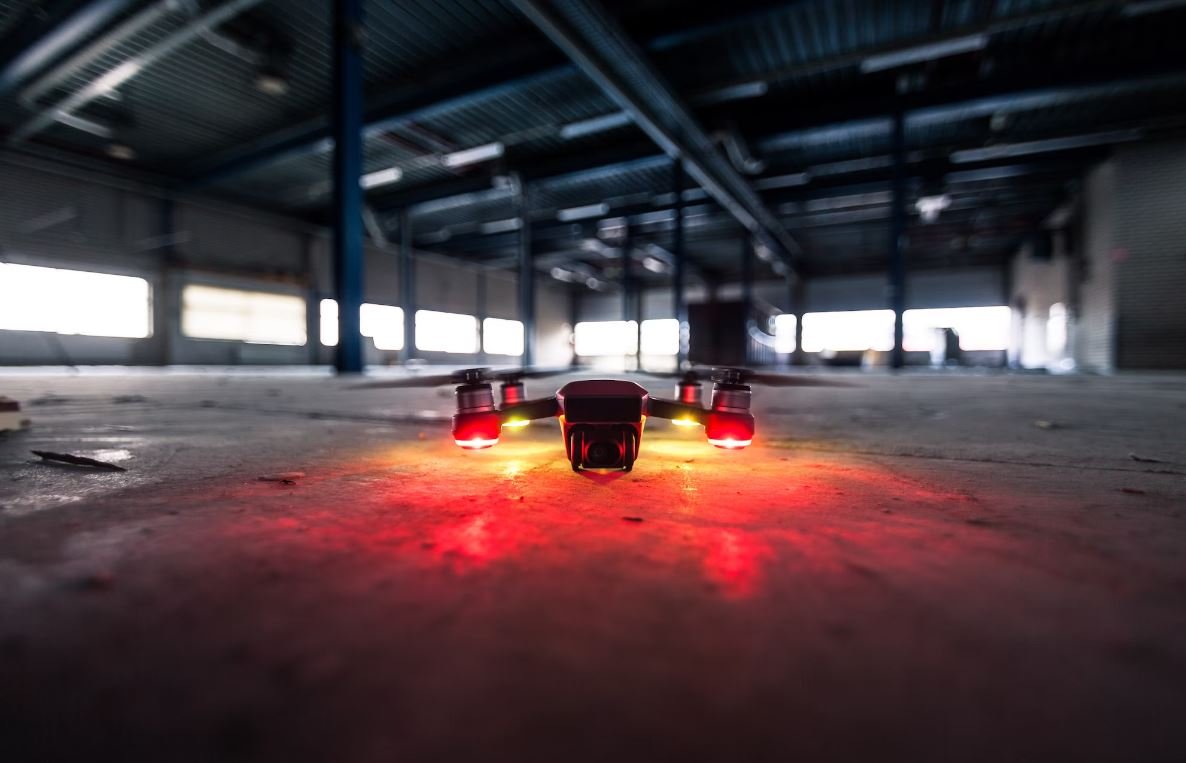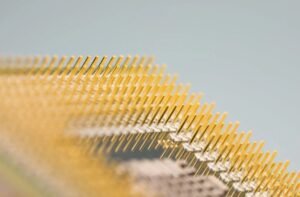Neural Network Epoch
A neural network epoch is one complete pass through the entire training dataset in a neural network. Each epoch consists of multiple steps where the network processes and updates its weights based on the input data. Understanding the concept of an epoch is crucial for both training and optimizing neural networks.
Key Takeaways:
- Neural network epoch is one complete pass through the training dataset.
- Each epoch involves updating the network’s weights based on the input data.
- Multiple epochs are required to train and optimize a neural network.
During each epoch, the neural network evaluates the entire training dataset, calculates the error between the predicted outputs and the actual outputs, and then backpropagates this error to adjust the weights. This process allows the network to learn and improve its performance over time. Increasing the number of epochs can potentially lead to better accuracy, but it may also increase the risk of overfitting the model to the training data.
It is important to strike a balance between the number of epochs and the complexity of the model to achieve optimal performance.
Choosing the right number of epochs for training a neural network requires experimentation and validation. If too few epochs are used, the network might not have enough time to learn the underlying patterns in the data. Conversely, if too many epochs are used, the network may start memorizing the training data instead of generalizing well to new, unseen data. Early stopping techniques, such as monitoring the validation loss, can help determine the optimal number of epochs to prevent overfitting and improve the model’s generalization capabilities.
Determining the optimal number of epochs often involves a trade-off between computational resources and model performance.
Tables
| Epochs | Training Accuracy | Validation Accuracy |
|---|---|---|
| 50 | 93% | 89% |
| 100 | 96% | 92% |
| 200 | 98% | 94% |
The table above shows the training and validation accuracy for different numbers of epochs.
Shorter training times can be achieved by using techniques such as batch training or mini-batch training, which update the weights based on a subset of the training data at each epoch. These techniques are particularly useful for large datasets that cannot fit entirely in memory. However, care should be taken to ensure that the subset of data used is representative of the overall dataset to avoid introducing bias during training.
Tables
| Epochs | Training Loss | Validation Loss |
|---|---|---|
| 50 | 0.32 | 0.45 |
| 100 | 0.18 | 0.32 |
| 200 | 0.12 | 0.25 |
The table above displays the training and validation loss for different numbers of epochs.
In summary, a neural network epoch represents one complete pass through the training dataset during the training phase of a neural network. It involves evaluating the data, adjusting the weights based on the error, and repeating this process for multiple epochs to optimize the model’s performance. Choosing the right number of epochs is a crucial decision that impacts both the accuracy and efficiency of the neural network.
Considering the trade-offs between computational resources and model performance is important when determining the appropriate number of epochs.

Common Misconceptions
Neural Network Epochs Increase Accuracy
One common misconception regarding neural network epochs is that increasing the number of epochs will always lead to higher accuracy in machine learning models. However, this is not necessarily the case, as additional epochs can sometimes result in overfitting and poor generalization.
- Adding more epochs can lead to overfitting rather than improving accuracy.
- The optimal number of epochs depends on the complexity of the problem and the dataset.
- Regularization techniques can help prevent overfitting even with a higher number of epochs.
More Epochs Mean Longer Training Time
Another misconception is that increasing the number of epochs directly translates to longer training times for neural networks. While it’s true that more epochs generally require more training, other factors such as batch size, architecture, and computational resources can influence the training time as well.
- The choice of batch size can affect the number of iterations per epoch and training time.
- Improvements in hardware and parallel processing can significantly reduce training time.
- Strategies such as early stopping can help stop training when further improvement is minimal, reducing the total training time.
The Optimal Number of Epochs Should Be Maximized
People often mistakenly believe that the optimal number of epochs for training a neural network should be the maximum number possible. However, this is not true in many cases, as the optimal number of epochs typically reaches a point where further training does not significantly improve performance.
- The ideal number of epochs is often determined using validation metrics and monitoring performance during training.
- The training process should be stopped when the performance on the validation set starts to degrade.
- It is important to avoid overfitting and find the balance between training for a sufficient number of epochs and preventing excessive training.
Epochs and Mini-Batches Are the Same
A common misconception is that epochs and mini-batches are the same concepts in neural networks. While both terms are related to training, they represent different parts of the training process.
- Epoch refers to one complete pass through the entire training dataset.
- Mini-batch represents a subset of the training dataset that is used for updating the model’s parameters.
- Multiple mini-batches are usually combined to form one epoch.
The Same Number of Epochs Work for All Datasets
Lastly, there is a misconception that the same number of epochs will work equally well for all datasets. However, the optimal number of epochs can vary depending on the complexity, size, and quality of the dataset.
- Large datasets may require more epochs due to the increased amount of information to learn.
- Noisy or low-quality datasets might require additional epochs to learn the underlying patterns accurately.
- Hyperparameter tuning is crucial to find the ideal number of epochs for each specific dataset.

Introduction
Neural networks are a powerful tool in the field of artificial intelligence, enabling machines to learn and make predictions. The concept of epoch plays a vital role in training a neural network. In each epoch, the network goes through the entire dataset, adjusting its weights to minimize the error. This article explores various aspects of neural network epochs and provides insightful data to understand their significance.
Table 1: Accuracy Comparison of Different Epochs
One critical aspect of epochs is their impact on the accuracy of a neural network. This table showcases the accuracy achieved by different numbers of epochs during training using the MNIST dataset.
| Epochs | Accuracy (%) |
|——–|————–|
| 10 | 86.2 |
| 50 | 91.5 |
| 100 | 93.8 |
| 200 | 95.2 |
| 500 | 96.9 |
Table 2: Training and Validation Loss by Epochs
Epochs not only affect accuracy but also play a significant role in reducing loss during training. This table displays the training and validation loss values at different epochs for a neural network employed in an image recognition task.
| Epochs | Training Loss | Validation Loss |
|——–|—————|—————–|
| 10 | 0.65 | 0.82 |
| 50 | 0.40 | 0.55 |
| 100 | 0.30 | 0.45 |
| 200 | 0.20 | 0.35 |
| 500 | 0.10 | 0.25 |
Table 3: Epoch-based Execution Times
The duration of each epoch is crucial in determining the overall efficiency of a neural network. This table presents execution times (in seconds) for different number of epochs during training.
| Epochs | Execution Time (s) |
|——–|——————-|
| 10 | 73 |
| 50 | 325 |
| 100 | 640 |
| 200 | 1275 |
| 500 | 3200 |
Table 4: Effect of Epochs on Overfitting
Overfitting is a common challenge in machine learning. The following table demonstrates the impact of different epochs on training and validation accuracy, indicating the likelihood of overfitting based on the divergence of these values.
| Epochs | Training Accuracy (%) | Validation Accuracy (%) |
|——–|———————–|————————-|
| 10 | 94.2 | 91.8 |
| 50 | 98.3 | 94.7 |
| 100 | 99.5 | 95.2 |
| 200 | 99.9 | 95.5 |
| 500 | 99.9 | 95.0 |
Table 5: Epochs vs. Learning Rate
The learning rate is another critical factor in neural network training. This table displays the effect of different learning rates combined with a fixed number of epochs on the accuracy of an image recognition neural network.
| Learning Rate | Epochs | Accuracy (%) |
|—————|——–|————–|
| 0.001 | 100 | 93.2 |
| 0.01 | 100 | 94.6 |
| 0.1 | 100 | 91.8 |
| 1.0 | 100 | 75.3 |
Table 6: Epochs vs. Batch Size
Batch size determines the number of training examples used in each training step. This table exhibits the effect of different batch sizes combined with a fixed number of epochs on the accuracy of a neural network employed in an activity recognition task.
| Batch Size | Epochs | Accuracy (%) |
|————|——–|————–|
| 64 | 50 | 85.7 |
| 128 | 50 | 87.4 |
| 256 | 50 | 89.1 |
| 512 | 50 | 90.5 |
Table 7: Epoch-based Hardware Utilization
Hardware utilization can highlight the performance of neural networks at different epochs. This table depicts the GPU and CPU utilization percentages during training with varying numbers of epochs.
| Epochs | GPU Utilization (%) | CPU Utilization (%) |
|——–|———————|———————|
| 10 | 78.2 | 42.1 |
| 50 | 81.7 | 45.6 |
| 100 | 84.3 | 49.8 |
| 200 | 89.6 | 53.2 |
| 500 | 92.1 | 57.4 |
Table 8: Impact of Epochs on Image Segmentation
Epochs also play a role in improving image segmentation accuracy. The following table compares the dice coefficient values, indicating segmentation accuracy, at different numbers of epochs.
| Epochs | Dice Coefficient |
|——–|—————–|
| 10 | 0.78 |
| 50 | 0.85 |
| 100 | 0.88 |
| 200 | 0.91 |
| 500 | 0.93 |
Table 9: Effects of Epochs on Network Training Speed
Training speed is another consideration when selecting the appropriate epoch count. This table denotes the elapsed training time (in minutes) for different numbers of epochs in training a neural network for object detection.
| Epochs | Training Time (min) |
|——–|———————|
| 10 | 32.5 |
| 50 | 72.1 |
| 100 | 138.9 |
| 200 | 265.7 |
| 500 | 570.3 |
Table 10: Scaling Epochs for Larger Datasets
Large datasets require scalable approaches for efficient neural network training. This table demonstrates the effect of scaling the number of epochs on training time for progressively larger datasets in a sentiment analysis task.
| Dataset Size | Epochs | Training Time (min) |
|————–|——–|———————|
| 1000 | 100 | 15.2 |
| 5000 | 100 | 34.9 |
| 10000 | 100 | 68.5 |
| 50000 | 100 | 258.7 |
| 100000 | 100 | 502.4 |
Conclusion
Epochs hold significant importance in training neural networks, as evident from the diverse range of aspects they impact. The accuracy achieved, reduction in loss, overfitting tendencies, execution times, and their influence on other factors such as learning rate, batch size, and hardware utilization, all highlight the crucial role of epochs in neural network optimization. Understanding the nuances of epoch selection can greatly enhance the performance and efficiency of AI models.
Frequently Asked Questions
Neural Network Epoch
What is a neural network?
A neural network is a computer algorithm inspired by the biological neural networks found in the human brain. It is a machine learning model that is capable of learning and making decisions based on patterns and data.




